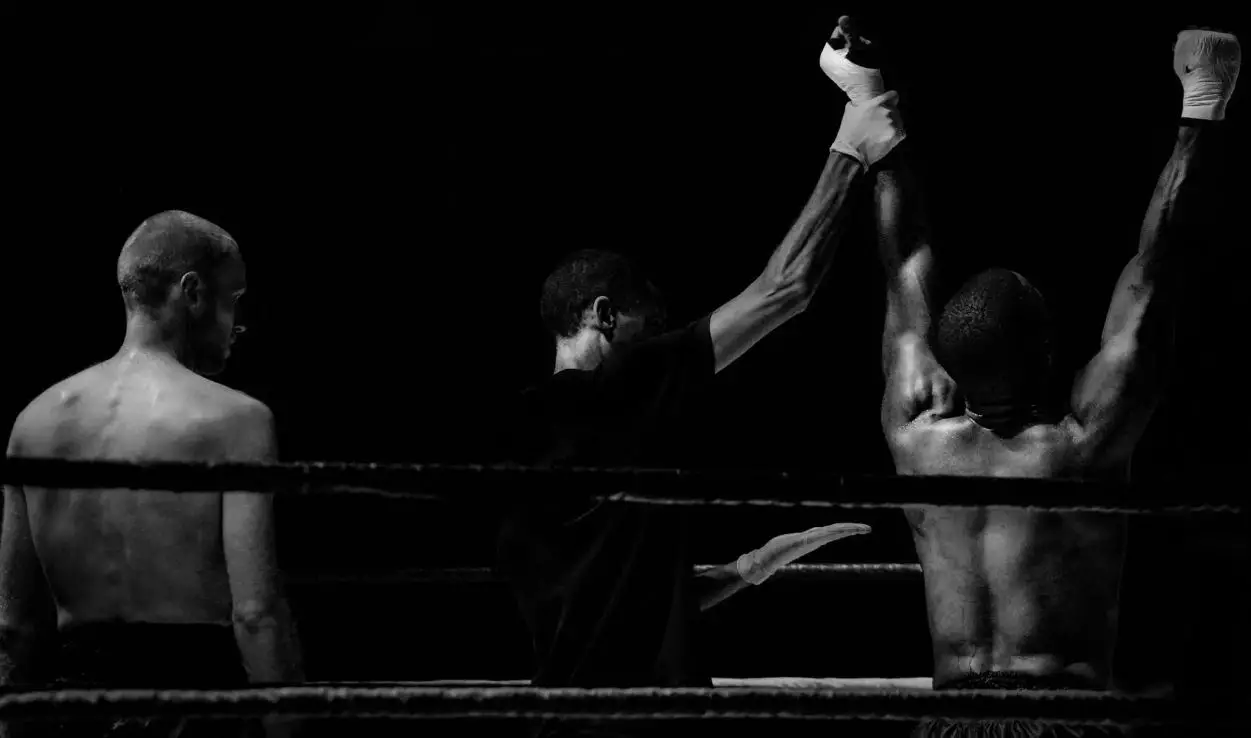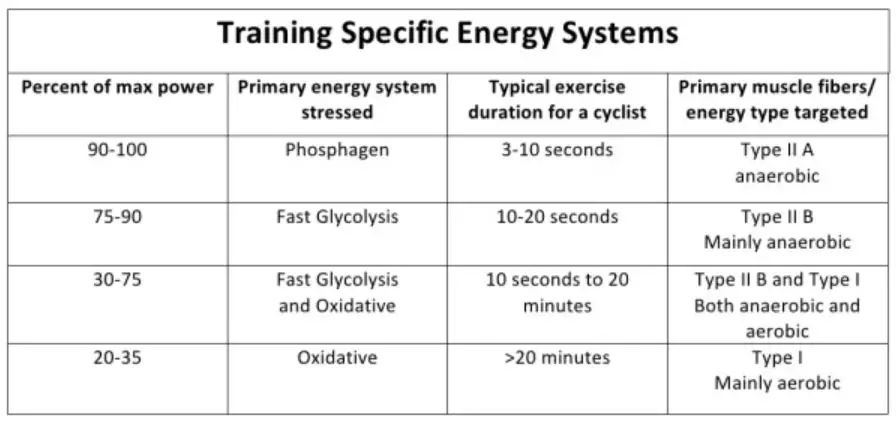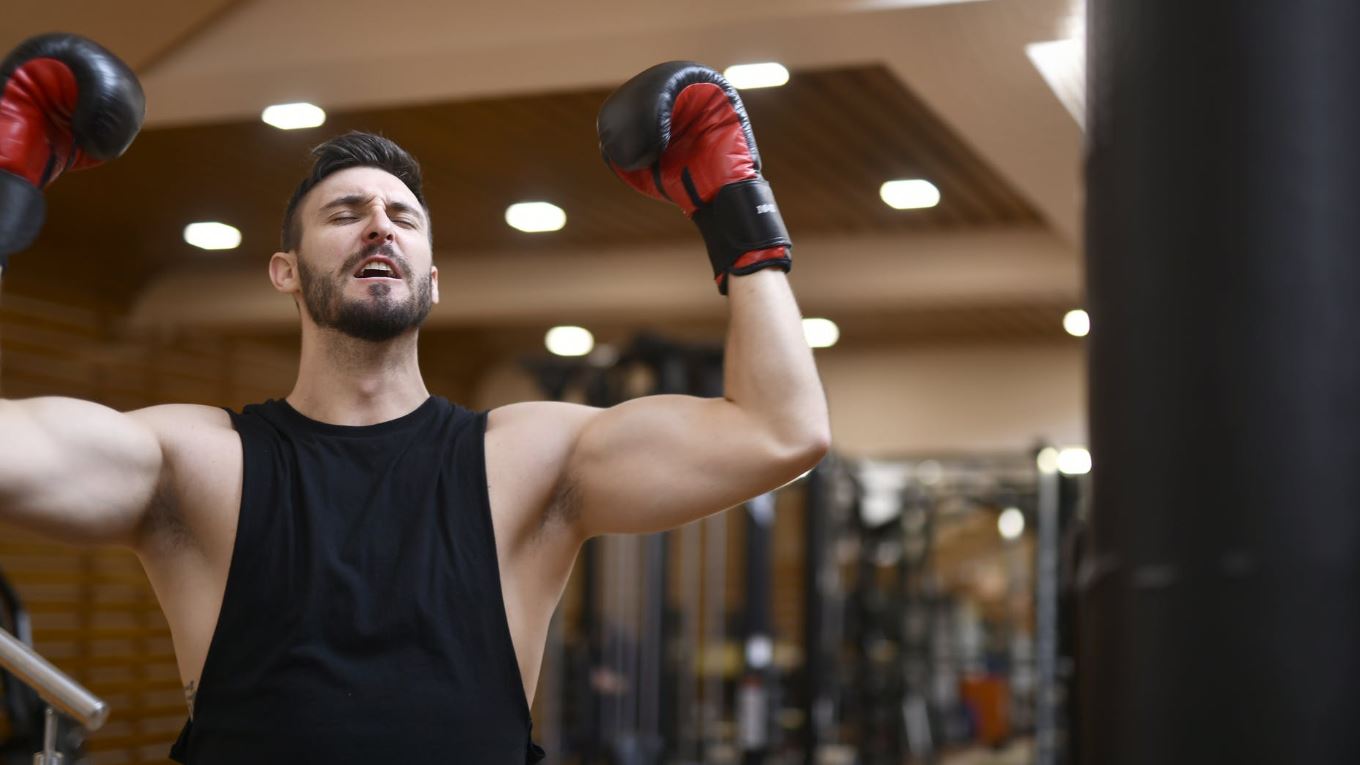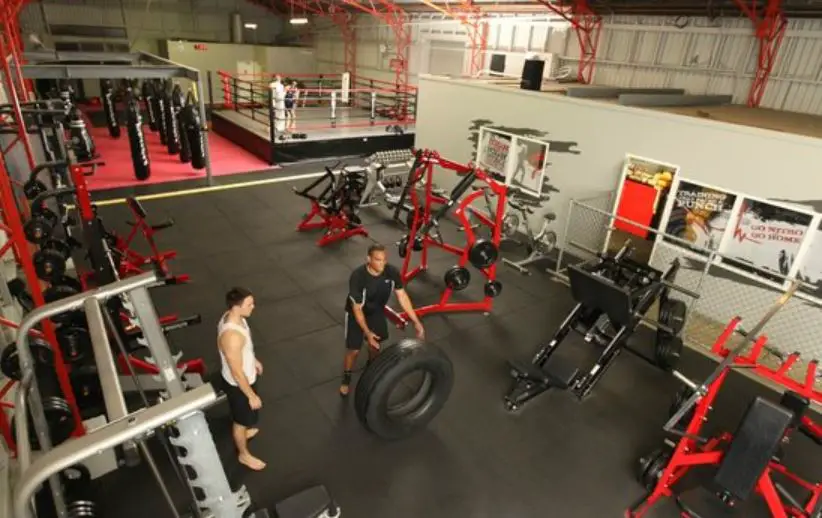
Preparing for your first fight can be a big deal. All of your friends and maybe your family will be watching and you will be eager to perform and get the win.
The absolute best thing you can do to give a good account of yourself on the night is to have the best preparation possible. That old Muhammad Ali saying ” the fight is won far away from the bright lights” couldn’t be more true. If you and your opponent are both equally skilled then the one who is in better condition will win the fight.
By the time the fight comes around, you will either be ready or not, so start early, train hard, train smart and follow the advice of those people who have been there and done it before, especially your coach.
Don’t Fight Too Early
When you start training you might be thinking about getting a fight straight away. I would recommend to train for at least 6-months before you think about having an amateur fight. This will allow you to protect your techniques and drill your combinations into muscle memory.
If you keep fighting, eventually you’re going to be matched against better and better opponents so you should wait until you have a good base level of skills before jumping in the ring so you don’t get over matched too early.
Give Yourself 8 Weeks To Get Fully Ready
In an ideal world, 8-weeks is the perfect time frame to get in the best shape possible for a fight. It will allow you to develop all areas of your conditioning so that you are in peak condition when the fight rolls around.
3 Energy Systems To Prepare

The Aerobic System
This is your body’s ability to fuel itself with oxygen during exercise. Steady state cardio like running or jumping rope is perfect for developing the aerobic system. Aerobic exercise usually lasts from between 1-minute and 60 minutes.
A good aerobic base is like a foundation for building your boxing fitness. The system should be built as far away from your fight as possible and you should move to more intense training as the fight gets closer.
The Anaerobic System
This is intense exercise, between 5 seconds and 1 minutes in duration. During anaerobic exercise, the muscles can’t refuel with oxygen which causes lactic acid to build up in your arms and this is why your arms feel tired during boxing.
The anaerobic system is going to be the most important in your fight and you should spend the most time developing the system with exercises like pad work, bag work, sparing, drills, circuits, sprints and strength training.
The Alactic System
This is the amount of force you can generate, is your one rep max. It’s short duration, 1 to 5 seconds like throwing a knockout punch or combo to finish the fight.
This refers to your power and heavy strength training will build a base for increasing this power in the boxing gym.
Running
Running is the best way to build your aerobic system and from weeks 8 to 4 we should be looking at Long runs of 10K at least once a week with maybe another 5K run if you can fit it in.
This will build your lung capacity and condition your legs for moving around the ring. As the fight gets closer, you should be doing fast 5K runs and transitioning to sprints/hill sprints in weeks 4 to 1.
Swimming and spinning classes are also good choices for building aerobic conditioning.
Jumping Rope Or Skipping
Not only does jumping rope build aerobic capacity it also increases the coordination between your hands and feet which is crucial for boxing. That makes jumping rope important, especially for beginners.
Roger Mayweather even said that jumping rope was the key to being a great fighter.
Jumping rope also builds the calves and leg muscles and increases arm endurance for throwing punches. If you could do three, 3 minute rounds every day leading up to your fight, even at home, that will be great preparation.
Pad Work

Working on the pads with an experienced coach is one of the most important things you can do in the build up. They should be able to correct basic flaws in your game like dropping your right hand when you throw a left hook and not keeping your hands up in general.
They can also guide you through the rounds, teach you the proper footwork and pivoting and let you know how to move your head.
They can teach you how to throw good counters, build up your defence and avoid your opponent’s counter punches. The pads are also a great workout increasing your conditioning, stamina and endurance.
Shadow boxing
Shadow boxing can seem awkward at first, but all the top fighters put a lot of emphasis on it. Shadow boxing is not only great to warm up but it’s also perfect for visualising yourself in the ring against your opponent and landing your favourite combos while perfecting your technique.
You can work on your footwork, your head movement, pivoting after the left hook and perfecting any new skills and techniques you’ve been learning. You can even shadow box with light dumbbells, under 3 lbs to increase your arm endurance, punching power and speed.
Heavy Bag

The heavy bag is great for increasing your punching power and arm endurance. It’s also great for practicing your combos but it can teach some bad habits, like keeping your hands low because it doesn’t hit back. Remember to keep your hands up and bring your punching hand back to the chin just as quickly as you threw it.
Heavy bag is also great for speed and power drills which can be a pivotal part of getting in fighting condition.
Speed Bag
The speed bag is great for building endurance in the arms and shoulders and it’s also really good for increasing hand eye coordination and just becoming an all round better boxer.
Circuits And Core
Circuits are great for building muscle endurance, conditioning and increasing core strength. Building a solid core that can take a punch is also quite important. Circuits can build your anaerobic threshold by making you work continuously on different stations for 3-minute rounds. It simulates how hard you have to work in a fight but it also increases you’re all around muscle conditioning and endurance.
Work the core separately at home if you have to, with planks, sit ups, mountain climbers in sets without taking a break.
Sparring
This is your chance to practice all of your offensive and defensive skills. This is going to be the most important practice before your fight. Remember not to go full force in sparring but work at 80% with your partner so you can both improve your skills.
If you’re fighting for 3 rounds, spar for at least 6 or 12 round once a week to make sure you are in the condition for 3 hard rounds on fight night. Pick up the intensity in the last couple of weeks to 90% or even 100% if both fighters want to go all out.
Strength Training
Outside the gym there’ll be other things that can really help. Strength training at least twice a week as far out from the fight as possible will increase your punching power.
Strength training involves compound lifts, with heavy weights for a low number of reps. Five by five training with deadlifts, squats, bench press, military press and pull-ups will increase your strength and allow you to develop your power for the ring without building useless muscle.

Sprints & Hills
Sprints are great for increasing your anaerobic threshold and make you able to sustain a flurry of punches for longer and with more power. You should be looking at adding sprints increasingly with about 4 weeks to go to your fight. Hill sprints are even better for getting you in peak anaerobic condition.
Sled Runs
Loading up a sled with weights and pushing it back and forth across the gym floor is a great way to build your anaerobic capacity, leg strength and overall strength for fighting.
The Diet
You want to use your diet to get as much nutrition as possible. Good lean meats, eggs and plenty of vegetables will give you all the nutrition and protein you need to recover and repair your body. Starchy carbs like whole wheat pasta and spaghetti are perfect for fuelling intense workouts.
After training, your body will be low in glycogen levels so having a protein shake or smoothie afterwards will help you to recover as quickly as possible.
Rest & Recovery
Remember to get good rest after every intense session. Try to get a good night sleep every night of at least 8 hours. Go for a massage when your muscles are sore and try to avoid alcohol.
The Week Of Your Fight
Try to have your last hard sparring, one week before your fight and that should be the end of your hard training. You can still go to the gym and lightly hit the bags or do some very light sparring just to move around the ring but all the hard work should be done with 1 week to go.
After that, it’s all about fuelling your body with the proper nutrition, making sure you make the weight and trying to remain as relaxed as possible.
Staying Calm And Relaxed
Every fighter feels edgy and anxious the week before a fight so you need to do your best to deal with these nerves, visualise victory and keep yourself occupied with watching movies, going to the cinema and playing the PS4 or however you would like to keep busy.
Have A Game Plan
You should know what your strengths are in the ring, if you’re tall it might be straight punches, if you’re short and stocky you might want to get inside and throw powerful hooks.
However you like to fight, you should have a game plan and you should be visualising how you are going to execute it.
The Day Before & Fight Day
The night before the fight, try to stay calm and relaxed and get a good night’s sleep. When you wake up you should be focused on enjoying the fight, doing your best and hopefully getting your hand raised.
When You Get In The Ring

During the fight, make sure to stick to your game plan, keep your chin protected at all times, do your best and just enjoy it.
Win, Lose or Draw, you have achieved something that everybody wants to do, but not everybody has had the balls to actually achieve. Give yourself a pat on the back and even if you lost you can always go again.

